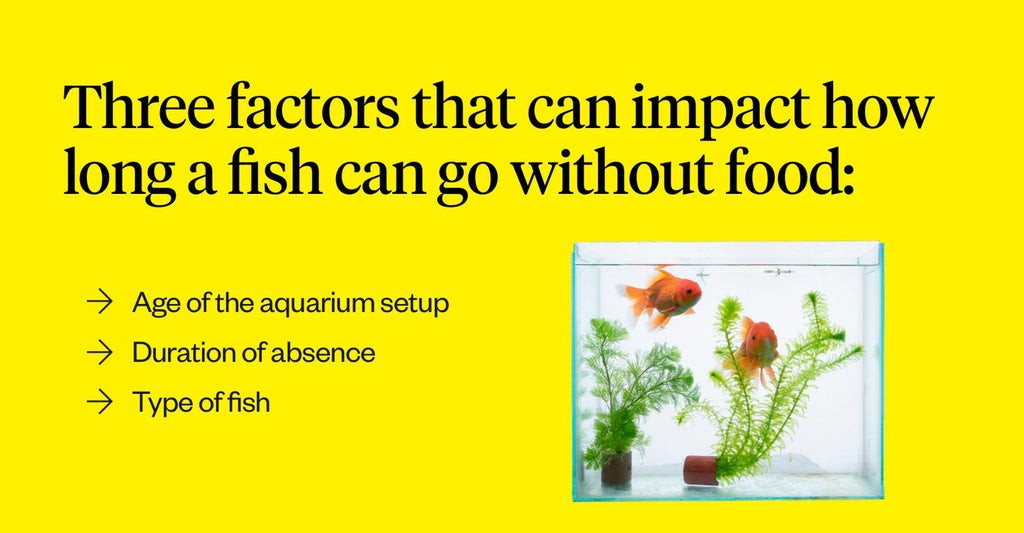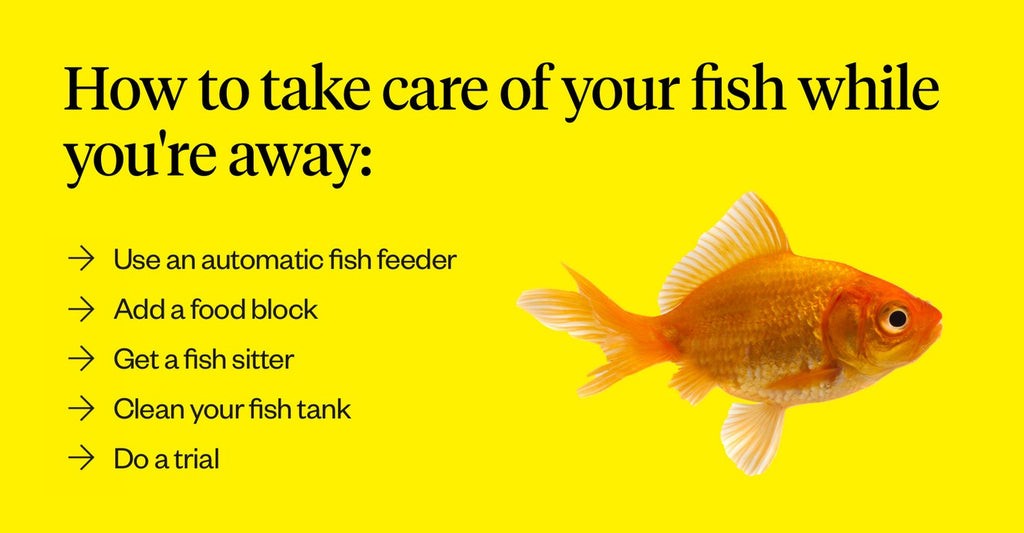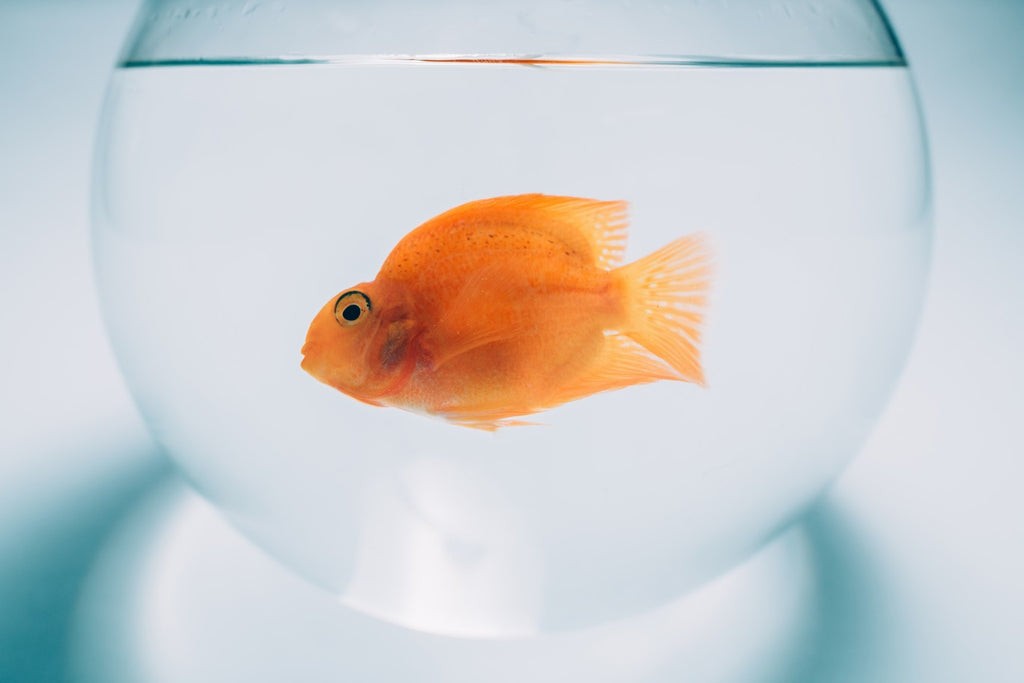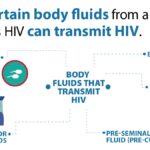How Many Days Can Fish Go Without Food, impacting their well-being? FOODS.EDU.VN understands the importance of proper fish care, and knowing how long your aquatic friends can survive without sustenance is crucial for responsible pet ownership. We offer guidance on fish feeding schedules, nutritional needs, and creating a thriving aquarium environment. Discover valuable insights on fish fasting tolerance, feeding frequency, and fish dietary habits right here.
1. Understanding Fish Fasting: Key Considerations
The ability of a fish to survive without food for an extended period hinges on several interconnected elements. These include the fish’s surrounding environment, the overall health of the aquarium, the species of fish in question, and the level of preparedness undertaken before any absence. Let’s explore these factors in greater depth.
1.1. Aquarium Age and Ecosystem Stability
The age of your aquarium setup significantly influences a fish’s resilience to fasting.
-
Established Aquariums: Older aquariums, with their established ecosystems, provide a more stable environment. Beneficial bacteria break down waste, creating a balanced habitat. Fish in these tanks are generally more accustomed to fluctuations in food availability.
-
Newer Aquariums: New setups lack this established balance, potentially leading to “new tank syndrome.” This condition arises from insufficient beneficial bacteria to process waste, causing ammonia spikes that are toxic to fish. It is crucial to monitor water parameters closely during the initial weeks.
-
Old Tank Syndrome: Conversely, very old tanks can experience “old tank syndrome,” characterized by a sudden pH drop that kills beneficial bacteria. This also leads to toxic ammonia levels.
Aquarium Age Ecosystem Stability Potential Risks Mitigation Strategies New (Under 3 Weeks) Unstable New Tank Syndrome (Ammonia Spikes) Frequent Water Testing, Partial Water Changes Established (Weeks+) Stable Gradual Waste Buildup Regular Water Changes, Proper Filtration Old (Years) Potentially Unstable Old Tank Syndrome (pH Drop, Ammonia Spikes) Gradual Water Changes, Careful Monitoring of Water Parameters 




Ensuring the aquarium has a stable ecosystem, regardless of its age, is paramount to your fish’s well-being, especially when considering periods without feeding.
1.2. Absence Duration and Preparation
The anticipated length of your absence is a primary determinant of how much preparation your aquarium requires.
- Short Absences (1-3 Days): Most healthy fish can safely endure a few days without food. No special preparations are typically needed for this duration.
- Extended Absences (More Than 3 Days): Longer periods demand more thorough planning. This includes cleaning the filtration system, performing a partial water change, and potentially employing an automatic feeder or arranging for a fish sitter.
The longer you plan to be away, the more proactive you must be in ensuring your fish’s needs are met.
1.3. Fish Species, Diet, and Metabolism
Different fish species have varying dietary needs and metabolic rates, affecting their ability to withstand fasting.
-
Herbivores: Fish that primarily consume plants and algae require more frequent feeding due to the lower caloric density of their diet.
-
Carnivores: Carnivorous fish, adapted to infrequent meals in the wild, can generally tolerate longer periods without food.
-
Omnivores: Omnivores have a more flexible diet, allowing them to fall somewhere in between herbivores and carnivores in terms of fasting tolerance.
-
Age and Size: Younger fish and smaller species have higher metabolic rates and require more frequent feeding than older, larger fish.
Fish Type Diet Fasting Tolerance Feeding Frequency (Typical) Herbivores Plants/Algae Low Daily Carnivores Meat High Every Other Day Omnivores Mixed Moderate Daily or Every Other Day
Understanding your fish’s specific dietary requirements is vital for determining how long they can safely go without food. FOODS.EDU.VN provides detailed species-specific care guides to help you tailor your approach.
2. Strategies for Managing Feeding During Absences
While fish can survive without food for a limited time, several methods exist to ensure their nutritional needs are met while you’re away.
2.1. Automatic Fish Feeders: Convenience with Caution
Automatic fish feeders are devices that dispense food at predetermined intervals.
- Benefits: They offer a reliable way to provide consistent feeding while you’re away.
- Drawbacks: They require careful calibration to avoid overfeeding, which can lead to water quality issues and health problems for your fish.
It’s essential to use high-quality food and to test the feeder’s accuracy before leaving for an extended period.
2.2. Food Blocks: Gradual Release, Limited Nutrition
Food blocks slowly dissolve in the water, releasing food particles over time.
- Benefits: They are a simple and inexpensive option for short absences.
- Drawbacks: They can degrade water quality if not used in a filtered aquarium, and the nutritional content may be less than ideal. Some fish may also not readily accept the taste or texture of food blocks.
2.3. The Value of a Reliable Fish Sitter
Enlisting a trusted individual to care for your fish is often the most reliable solution.
- Benefits: A fish sitter can monitor the aquarium’s overall health, address any potential problems, and provide tailored feeding based on your instructions.
- Considerations: Choose someone responsible and detail specific instructions regarding feeding amounts, water changes, and emergency procedures.
A knowledgeable fish sitter can provide peace of mind and ensure your aquatic companions receive the best possible care. FOODS.EDU.VN offers printable fish-sitting checklists to help you prepare comprehensive instructions.
3. Preparing Your Aquarium Before You Leave
Regardless of the feeding method you choose, several preparatory steps are crucial before any absence.
3.1. Water Quality Assessment and Management
- Partial Water Change: Perform a partial water change (25-50%) to remove accumulated waste and refresh the water.
- Water Parameter Testing: Test the water’s pH, ammonia, nitrite, and nitrate levels to ensure they are within the optimal range for your fish species.
- Filter Maintenance: Clean or replace filter media as needed to maintain optimal filtration capacity.
3.2. Equipment Inspection and Maintenance
- Filter Functionality: Ensure the filter is running correctly and has adequate flow.
- Heater Operation: Verify the heater is maintaining a stable temperature.
- Lighting System: Check the lighting system and set a timer to maintain a consistent day-night cycle.
3.3. Addressing Potential Problems
- Sick Fish: Quarantine any sick fish to prevent the spread of disease.
- Algae Overgrowth: Remove excess algae to maintain water quality and visibility.
- Clogged Decorations: Clean any decorations that may be impeding water flow.
By taking these proactive measures, you can minimize the risk of problems arising during your absence.
4. Conducting a Trial Run: Assessing Your Fish’s Resilience
A practical way to gauge your fish’s ability to withstand fasting is to conduct a trial run before your actual absence.
4.1. Monitoring Fasting Response
- Gradual Food Reduction: Over a week or two, gradually reduce the amount of food you offer to observe your fish’s response.
- Behavioral Observations: Pay close attention to any changes in behavior, such as lethargy, fin clamping, or increased aggression.
- Water Quality Monitoring: Regularly test water parameters to ensure they remain stable during the trial.
4.2. Testing Feeding Methods
- Automatic Feeder Calibration: Use the automatic feeder for a few days to ensure it dispenses the correct amount of food at the programmed intervals.
- Food Block Dissolution: Observe how quickly the food block dissolves and whether your fish readily consume it.
4.3. Adjusting Your Plan
Based on your observations during the trial run, adjust your feeding strategy as needed. If your fish show signs of stress or water quality deteriorates rapidly, shorten the fasting period or modify your feeding method.
5. Special Considerations for Fish Bowls
Keeping fish in bowls presents unique challenges regarding their ability to withstand periods without food.
5.1. Limited Environment
Fish bowls lack the filtration, temperature control, and oxygenation found in aquariums. This makes them less stable environments, where water quality can deteriorate rapidly.
5.2. Increased Maintenance
Bowls require more frequent water changes to remove accumulated waste and maintain acceptable water quality.
5.3. Limited Fasting Tolerance
Due to the instability of the environment, fish in bowls are less tolerant of fasting than those in aquariums.
5.4. Recommendation
If you must keep fish in a bowl, avoid leaving them unattended for more than a day or two. Consider transferring them to a proper aquarium or enlisting a fish sitter for longer absences.
6. Understanding the Specific Needs of Common Fish
While general guidelines exist, understanding the specific needs of common aquarium fish is essential for responsible care. Here’s a table outlining the typical fasting tolerance of some popular species:
| Fish Species | Diet | Typical Fasting Tolerance | Notes |
|---|---|---|---|
| Goldfish | Omnivore | 3-5 Days | Prone to overeating; monitor water quality closely. |
| Betta (Siamese Fighting Fish) | Carnivore | 5-7 Days | Can tolerate longer periods but benefits from regular feeding. |
| Guppies | Omnivore | 3-4 Days | Small size and high metabolism require relatively frequent feeding. |
| Tetras | Omnivore | 3-4 Days | Prefer to eat small meals throughout the day. |
| Angelfish | Omnivore | 4-5 Days | Larger fish with slower metabolism; can tolerate slightly longer fasting periods. |
| Corydoras Catfish | Omnivore | 3-5 Days | Bottom-dwellers; ensure they receive adequate food that sinks to the bottom of the tank. |
| Plecos | Herbivore | 3-5 Days | Require algae and plant-based foods; supplement with algae wafers or fresh vegetables. |
Important Note: These are just general guidelines. Individual fish may have different tolerances based on their health, age, and overall environment.
7. Addressing Common Concerns: A Detailed FAQ
Many fish owners have similar questions about how long fish can go without food. Here’s a comprehensive FAQ to address those concerns:
Q1: How do I feed my fish when I go on vacation?
A: Several options exist: automatic fish feeders, food blocks, or a fish sitter. A fish sitter is the most reliable option as they can monitor the tank’s overall health.
Q2: Do you have to feed fish every day?
A: Not necessarily. It’s often better to underfeed than overfeed. The frequency depends on the fish species, age, and metabolism.
Q3: How many days can fish survive without food?
A: It varies significantly, but most fish can survive for 3-5 days. Carnivores can generally last longer than herbivores.
Q4: What are the signs of a fish starving?
A: Look for lethargy, fin clamping (fins held close to the body), weight loss, and increased aggression towards tank mates.
Q5: Is it better to overfeed or underfeed fish?
A: Underfeeding is generally safer than overfeeding. Overfeeding leads to water quality issues, obesity, and other health problems.
Q6: Can baby fish go without food for as long as adult fish?
A: No. Baby fish have higher metabolic rates and require more frequent feeding. They should be fed at least once or twice a day.
Q7: What should I do if I accidentally overfed my fish?
A: Remove any uneaten food immediately. Perform a partial water change to dilute any dissolved waste. Monitor water parameters closely.
Q8: How can I improve the water quality in my aquarium?
A: Regular partial water changes, proper filtration, avoiding overfeeding, and maintaining a balanced ecosystem are all crucial.
Q9: Can I use tap water for my aquarium?
A: Tap water must be treated with a dechlorinator to remove chlorine and chloramine, which are toxic to fish.
Q10: Where can I learn more about fish care?
A: FOODS.EDU.VN offers a wealth of information on fish care, including species-specific guides, articles on aquarium maintenance, and expert advice.
8. Advanced Nutritional Strategies for Optimal Fish Health
Beyond basic feeding, several advanced strategies can further enhance your fish’s health and well-being.
8.1. Varied Diet
- Mimic Natural Diet: Research your fish’s natural diet and try to replicate it as closely as possible in captivity.
- Multiple Food Types: Offer a variety of food types, such as flakes, pellets, frozen foods, and live foods, to ensure a balanced intake of nutrients.
- Nutritional Supplements: Consider adding nutritional supplements, such as vitamins and minerals, to the diet, especially for fish with specific dietary needs.
8.2. Targeted Feeding Techniques
- Bottom Feeders: Use sinking pellets or tablets to ensure bottom-dwelling fish receive adequate nutrition.
- Nocturnal Feeders: Feed nocturnal fish after the lights are turned off to allow them to feed undisturbed.
- Aggressive Feeders: Distribute food evenly throughout the tank to prevent more aggressive fish from monopolizing the food source.
8.3. Live Foods and Enrichment
- Nutritional Value: Live foods, such as brine shrimp, daphnia, and bloodworms, are highly nutritious and stimulate natural foraging behaviors.
- Hunting Instincts: Introducing live foods can provide enrichment and exercise for your fish, promoting physical and mental well-being.
- Quarantine Live Foods: Always quarantine live foods before introducing them to your aquarium to prevent the introduction of parasites or diseases.
By implementing these advanced strategies, you can optimize your fish’s nutrition and promote their long-term health and vitality.
9. The Role of Aquarium Plants in Sustaining Fish
Live aquarium plants offer numerous benefits beyond aesthetics, including contributing to the aquarium’s ecosystem and providing supplemental food sources for certain fish.
9.1. Oxygen Production and Water Quality
- Photosynthesis: Plants produce oxygen through photosynthesis, helping to maintain oxygen levels in the aquarium.
- Nitrate Reduction: Plants absorb nitrates, a byproduct of fish waste, helping to improve water quality and reduce the frequency of water changes.
9.2. Natural Food Source
- Algae Growth: Plants provide a surface for algae to grow, which can serve as a food source for herbivorous fish.
- Edible Plants: Some plants, such as Java moss and duckweed, are edible and can be consumed by fish as a supplemental food source.
9.3. Shelter and Security
- Hiding Places: Plants provide hiding places for fish, reducing stress and promoting a sense of security.
- Breeding Sites: Some fish species use plants as spawning sites or for sheltering their fry.
9.4. Plant Selection
- Fish Compatibility: Choose plants that are compatible with your fish species. Some fish may eat or uproot certain types of plants.
- Lighting Requirements: Select plants that match the lighting conditions in your aquarium.
- Maintenance Level: Consider the maintenance level of the plants. Some plants require more care than others.
By incorporating live plants into your aquarium, you can create a more natural and sustainable environment for your fish.
10. The Future of Fish Nutrition: Emerging Trends and Research
The field of fish nutrition is constantly evolving, with ongoing research and emerging trends shaping the way we care for our aquatic companions.
10.1. Sustainable Ingredients
- Insect-Based Feeds: Research is exploring the use of insect-based feeds as a sustainable and nutritious alternative to traditional fishmeal.
- Algae-Based Feeds: Algae are another promising sustainable ingredient that can provide essential nutrients, such as omega-3 fatty acids.
10.2. Probiotics and Prebiotics
- Gut Health: Probiotics and prebiotics are being investigated for their potential to improve gut health, enhance nutrient absorption, and boost the immune system in fish.
- Disease Resistance: These supplements may also help to increase resistance to diseases and improve overall fish health.
10.3. Personalized Nutrition
- Species-Specific Formulations: Researchers are developing species-specific feed formulations tailored to the unique nutritional needs of different fish species.
- Life Stage Nutrition: Formulations are also being developed to meet the specific nutritional requirements of fish at different life stages, such as fry, juveniles, and adults.
By staying informed about these emerging trends and research findings, you can provide your fish with the most advanced and effective nutrition possible.
11. Conclusion: Responsible Fish Keeping and Nutritional Awareness
Ultimately, understanding how long fish can go without food is just one aspect of responsible fish keeping. By considering factors like aquarium age, fish species, and absence duration, and by implementing strategies like automatic feeders or fish sitters, you can ensure your fish receive the care they need. Remember, proper preparation and knowledge are your greatest allies in maintaining a healthy and thriving aquarium.
At FOODS.EDU.VN, we are dedicated to providing you with the most accurate and comprehensive information on all aspects of fish care. We encourage you to explore our website for more in-depth articles, species-specific guides, and expert advice. Whether you’re a seasoned aquarist or a beginner, we have the resources you need to become a more informed and responsible fish keeper.
Ready to dive deeper into the world of fish care and nutrition? Visit foods.edu.vn today to discover a wealth of valuable information and expert advice. Learn how to create a thriving aquarium environment, choose the right foods for your fish, and ensure their long-term health and well-being. Contact us at 1946 Campus Dr, Hyde Park, NY 12538, United States, or reach out via Whatsapp at +1 845-452-9600. Your aquatic friends will thank you!

